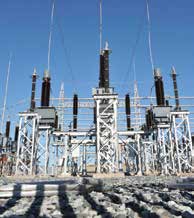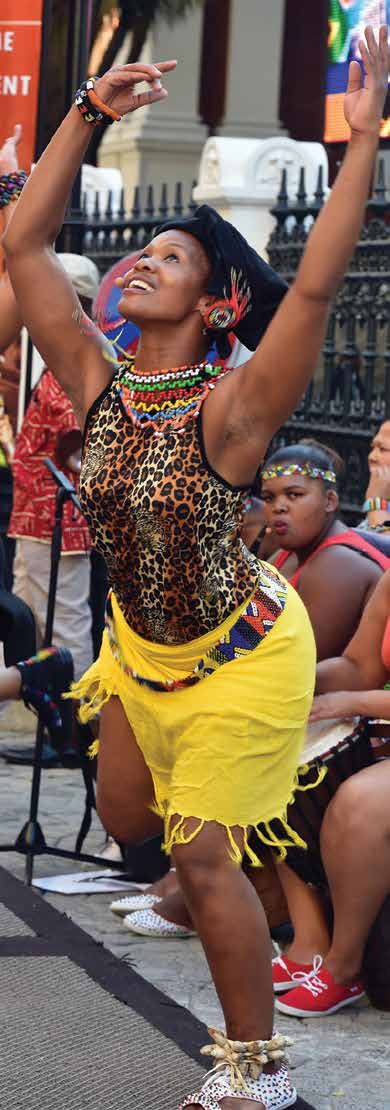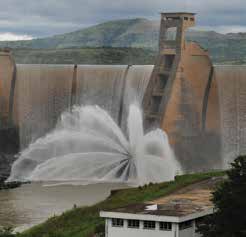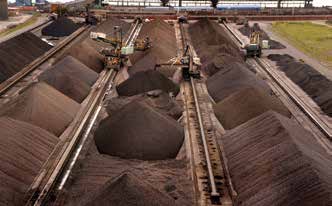Update on the Nine-Point Plan
Update on the Nine-Point Plan Estelle GreeffState of the Nation Address
Resolving the energy challenge
 The fact that there has been no loadshedding since August 2015 shows that government has made progress in stabilising the electricity supply.
The fact that there has been no loadshedding since August 2015 shows that government has made progress in stabilising the electricity supply.
Government has invested R83 billion in Eskom to enable the power utility to support Medupi Power Station in Limpopo and Kusile Power Station in Mpumalanga, and also to continue with a maintenance programme. Additional units from Ingula Power Station, situated on the border of both the Free State and KwaZulu-Natal, will be connected in 2017.
The multiple-bid windows of the Renewable Independent Power Producer Programme have attracted an investment of R194 billion.
Government will this year select the preferred bidders for the coal independent power producer. A Request for Proposals will also be issued for the first windows of gas to power bids.
 The nuclear energy expansion programme remains part of the future energy mix.
The nuclear energy expansion programme remains part of the future energy mix.
Government plans to introduce 9 600 megawatts of nuclear energy in the next decade, in addition to running the Koeberg Nuclear Power Station.
Incentives to boost investments
Government, through the Department of Trade and Industry, has introduced a number of incentives in the past few years to boost investments in the manufacturing sectors, especially the textiles, leather and automotive sectors.
The incentives for the automotive sector have attracted investments of over R25 billion over the last five years. They include key investments from Mercedes, General Motors, Ford, Beijing Auto Works, the Metair group, BMW, Goodyear and VW.
Multinational companies such as Nestle, Unilever, Samsung and Hisense have also affirmed South Africa as a regional manufacturing hub by retaining and expanding their investments in new plants.
Agriculture and land reform
Government has introduced the Agri-Parks Programme to increase the participation of smallholder farmers in agricultural activities.
Construction has begun in at least five Agri-parks in the West Rand in Gauteng, Springbokpan in North West, Witzenberg in the Western Cape, Ncora in the Eastern Cape and Ekangala in Mpumalanga.
 Ms Julia Shungube, the winner of the Female Entrepreneur of the Year 2015 Award from the Nkomazi Local Municipality in Mpumalanga.
Ms Julia Shungube, the winner of the Female Entrepreneur of the Year 2015 Award from the Nkomazi Local Municipality in Mpumalanga.
As part of the 50/50 Policy Framework that proposes relative rights for people who live and work on farms, 27 proposals have been received from commercial farmers and four are being implemented in the Eastern Cape and the Free State.
The Regulation of Land Holdings Bill will be presented to Cabinet in the first semester of 2016. The Bill aims to place a ceiling on land ownership at a maximum of 12 000 hectares and would prohibit foreign nationals from owning land. They would be eligible for long-term leases.
Since the reopening of land claims for people who had missed the 1998 deadline, about 120 000 new land claims had been lodged by December 2015.
Water and sanitation
 Government will continue to support farmers and communities affected by the drought, especially in the North West, KwaZulu-Natal, Free State, Limpopo and Mpumalanga. Among other things, it will provide mobile water tankers.
Government will continue to support farmers and communities affected by the drought, especially in the North West, KwaZulu-Natal, Free State, Limpopo and Mpumalanga. Among other things, it will provide mobile water tankers.
The first phase of the Mokolo and Crocodile Water Augmentation project in Lephalale area in Limpopo is fully operational. It will provide 30 million cubic meters of water per year.
The raising of the Clan William Dam wall in the Western Cape will raise the existing dam level by 13 metres to provide additional water supply.
The Department of Water and Sanitation is training 15 000 young people as artisans to fix leaking pipes and curb water wastage.
Improving labour relations
 Government has welcomed the agreement reached by social partners at the National Economic Development and Labour Council (NEDLAC) on the principle of a national minimum wage.
Government has welcomed the agreement reached by social partners at the National Economic Development and Labour Council (NEDLAC) on the principle of a national minimum wage.
NEDLAC was also finalising a framework to stabilise the labour market by reducing the length of strikes and eliminating violence during strike action.
Government is in discussion with the Congress of South African Trade Unions to find a solution to contentious matters related to the Tax Laws Amendment Act, which was signed into law in December 2015.
Through the Department of Social Development and National Treasury, government is finalising the comprehensive social security policy.
Mining sector
 One of the positive developments in the mining sector was the Leaders’ Declaration to Save Jobs, which was signed by mining industry stakeholders in August 2015.
One of the positive developments in the mining sector was the Leaders’ Declaration to Save Jobs, which was signed by mining industry stakeholders in August 2015.
To curb job losses, government has appealed to business that retrenchments should not be the first resort when they face difficulties.
Operation Phakisa
 As part of Operation Phakisa – the fast-result methodology launched in 2014 and implemented in the ocean economy, health, education and mining sectors – R7 billion has been committed in new port facilities. This followed the adoption of a public-private partnership model for port infrastructure development by Transnet National Ports Authority.
As part of Operation Phakisa – the fast-result methodology launched in 2014 and implemented in the ocean economy, health, education and mining sectors – R7 billion has been committed in new port facilities. This followed the adoption of a public-private partnership model for port infrastructure development by Transnet National Ports Authority.
Through the oceans economy segment of Operation Phakisa, South Africa has registered two bulk-carrier vessels in Port Elizabeth and a third tanker in Cape Town.
The launch of a fuel storage facility in Cape Town has brought an investment of R660 million.
 About R350 000 in private-sector investment has been committed in the aquaculture sector, which is an important growth area within the oceans economy segment of Operation Phakisa. Nine aquaculture farms are already in production in the Eastern Cape, KwaZulu-Natal, Western Cape and Northern Cape.
About R350 000 in private-sector investment has been committed in the aquaculture sector, which is an important growth area within the oceans economy segment of Operation Phakisa. Nine aquaculture farms are already in production in the Eastern Cape, KwaZulu-Natal, Western Cape and Northern Cape.
The Department of Science and Technology is expected to finalise the Sovereign Innovation Fund, a public-private funding partnership aimed at commercialising innovations based on ideas from the public and private sectors.
Broadband roll-out
Government has allocated R740 million to fast track the implementation of the first phase of broadband roll-out to connect more than 5 000 government facilities in eight district municipalities over a three year period.